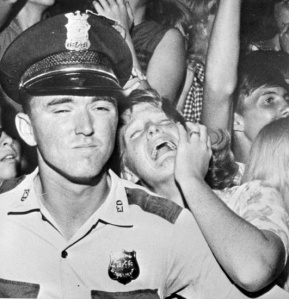For an industry that prides itself on being creative and untraditional, it doesn’t do as much as it probably should to challenge things when it comes to organisational structure – the way people and tasks are organised.
Most ad agencies opt for either the functional or matrix structures – as they’re technically called – though new structures have emerged that can be a lot more effective at driving better creative and business results.
When doing a post grad in business several years ago, I had the good fortune to study organisational structure in a big way and the role it can play in a firm’s success. There are 4 key forms of structure – and these are my thoughts on their role and applicability to our industry.
Functional structure – specialisation the key
The functional structure is the oldest form of structure and basically divides people according to task. Hence in agency world you have the account management department, the creative department, production, studio, traffic, finance, HR departments and so on.
Each person reports to their department head and works on projects that combine individuals from the different competencies.
The commonest problem with this structure is collaboration and speed. People often end up working in silos with loyalty tending to be departmental rather than organisational.
Such a structure often results in situations where getting things done is a constant battle (sounds familiar?) and the organisation – unless it has a single strong leader – never really coalesces as one.
In this age where collaboration is key to developing truly creative business solutions – such a structural make up is fine for a small agency but starts to be a problem as an agency picks up momentum and growth.
Divisional structure – if you’re going to have a leader – may as well have just one
The second type of structure is a divisional one. In a divisional structure, a lot better suited for agencies that have grown, the organisation breaks itself down into divisions – making each a largely self sufficient unit that invests in all the key resources it needs to operate.
Only an absolute few resources are shared and only when it makes better ‘business’ sense to do so and where efficiency doesn’t suffer.
This is a highly efficient structure and works as leadership is very clear – there is only one divisional head – so the unit has no option but to fall into line.
It is efficient too – as responsibility for the division lies with a single individual – so non-performance can be easily attributed to a single individual and appropriately dealt with.
When I worked at LINTAS in Mumbai city in the nineties, the agency had adopted this form of structure – and a highly effective one it was.
LINTAS organised itself as 5 divisional units called Bombay 1, Bombay 2, Bombay 3 and so on. Each was a business unit by itself and had its own resources – including Creative Director – with only a few shared ones such as studio and production – which were treated as separate business units anyway.
It worked a treat, amplified the power of the agency times five and was part of the reason the agency was able to emerge as the country’s second if not largest and most profitable shop at the time.
Matrix structure – a combination of functional and divisional
The third type of structure is matrix. A matrix structure tries to combine the benefits of a functional structure with a divisional one. People belong to a functional department but are allocated to projects where they collaborate and work with other members as a team.
This is the way most ad agencies today work.
If the members of the team are mature and competent this structure can work and that’s why it’s been adopted in such a widespread manner.
This structure has a high potential to deteriorate and skew more towards a functional type set up that simply pays lip service to its matrix name however.
If this happens, a matrix structure can easily start to become politicised. Games start to be played and factions start to form.
The result is not good for business. The structure starts to weigh the agency down and it is reduced to a point where it becomes impossible to take decisions and get everyone pulling in the same direction.
A matrix structure is basically a compromise – what can make it work is strong leadership. The role of the leader is basically ongoing and to ensure competing interests are managed and people’s efforts are directed to the organisation as a whole.
Cellular structure – a new form of structure
A fourth and relatively new form of structure is called cellular.
This is a structure that I think really works from a creative and efficiency point of view.
In this structure, the agency doesn’t bother with departments at all. Instead teams are formed around a client’s account needs and the structure lives to service their needs or those of a set of clients only.
In a cellular structure, people report to no one but themselves. They work in close proximity to each other and each performs a specialised function such as account service, creative, production and so on.
The benefit – hierarchy, systems, politics, process – usually don’t get in the way – and the focus is totally on the work.
Such structures often operate in a leaderless way – which means leadership is emergent not deliberate – the group nominates who leads based on ability and the leader may be different based on different tasks undertaken and areas of responsibility.
It’s a fluid structure – definitely not for the faint hearted but only the genuinely creative. It’s also a brutal structure with a low tolerance level for non performers – it’s as close as I think you can get to mob mentality today – in a legal way!
The upside – the team spirit, work and commitment is usually unmatched by any other structure.
In Sydney, George Patterson Bates – at one time the country’s largest agency by a long shot – experimented with this structure with good result. They called it the Pod concept. People sat together in pods – whole teams – and worked together on projects. Worked a treat I’m told. I’ve never worked for Patts though I must admit so have not seen it work first hand.
Agencies are creative – why aren’t their structures?
Most ad agencies today adopt the obvious – a functional or matrix structure. My question has always been why – so many more structures exist that are proven to work better.
Many times agencies don’t adopt them for a variety of reasons – weak leadership, leadership that simply isn’t aware that these options exist, leadership that doesn’t want to put noses out of joint (in a cellular structure you don’t need an ECD, CD or CSD – damn I’m a CSD!).
Whatever the reason, if an ad agency looks at structures that go beyond the safe and the obvious, they may find that they stumble upon something that can be game changing for their business.
 Bernbach made that observation about advertising more than 50 years ago. Today, it still rings true, and is basically what made me notice this ad for the UOB woman’s credit card that appeared in the ST earlier today.
Bernbach made that observation about advertising more than 50 years ago. Today, it still rings true, and is basically what made me notice this ad for the UOB woman’s credit card that appeared in the ST earlier today.







